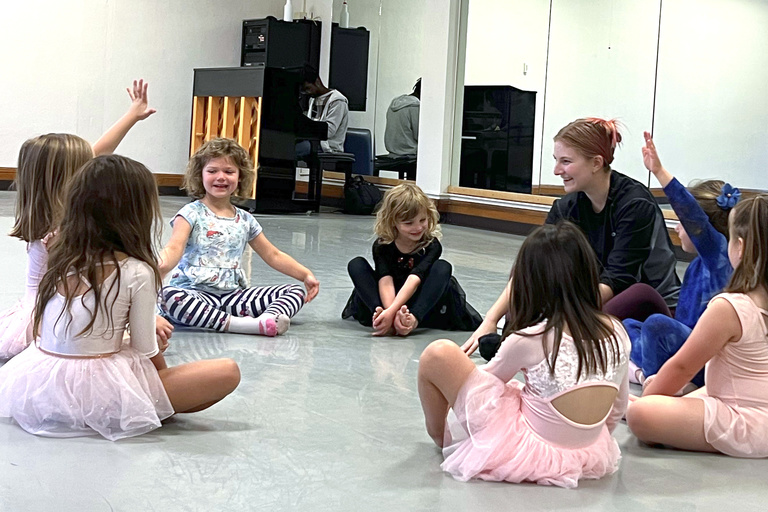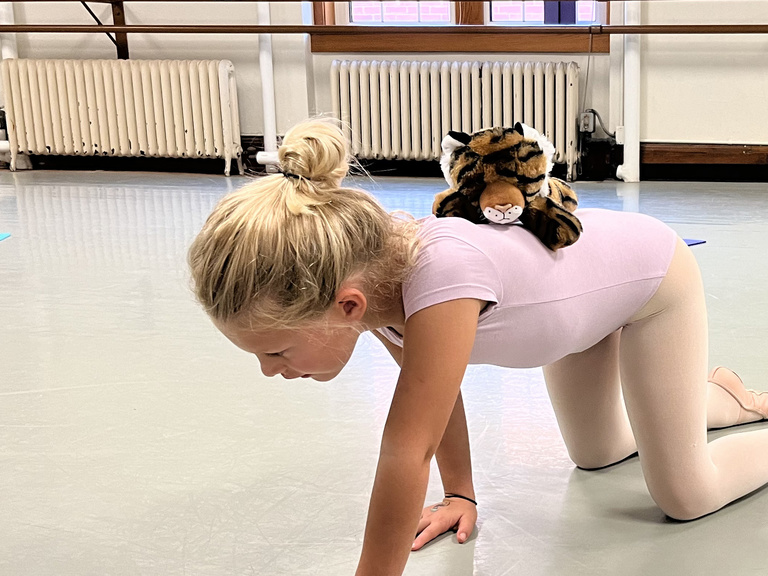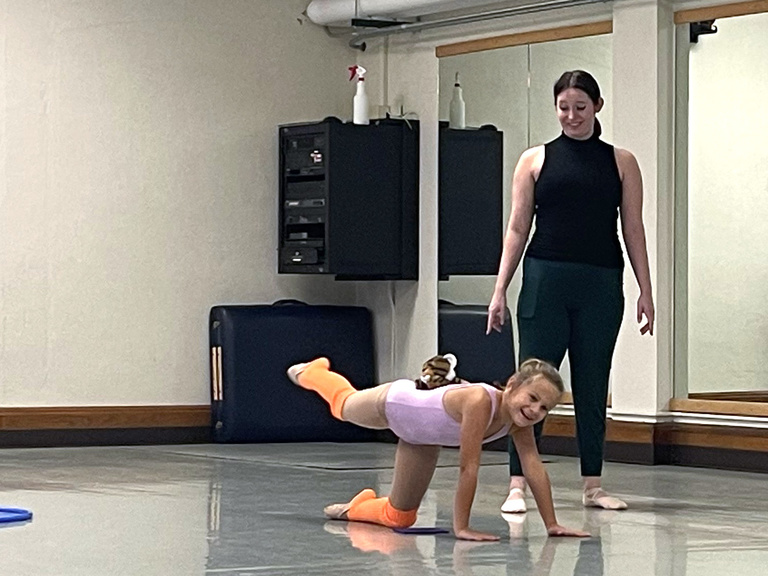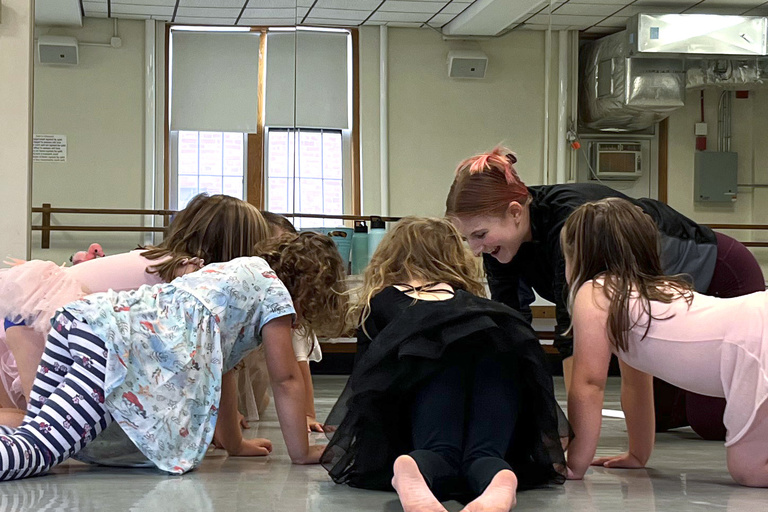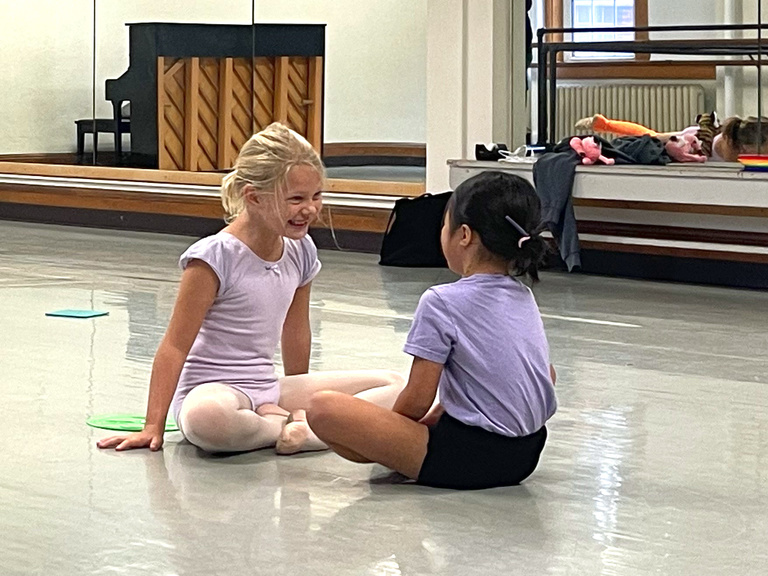Reading time: 2.5 minutes
Wee Dance and Creative Movement are where ballet starts
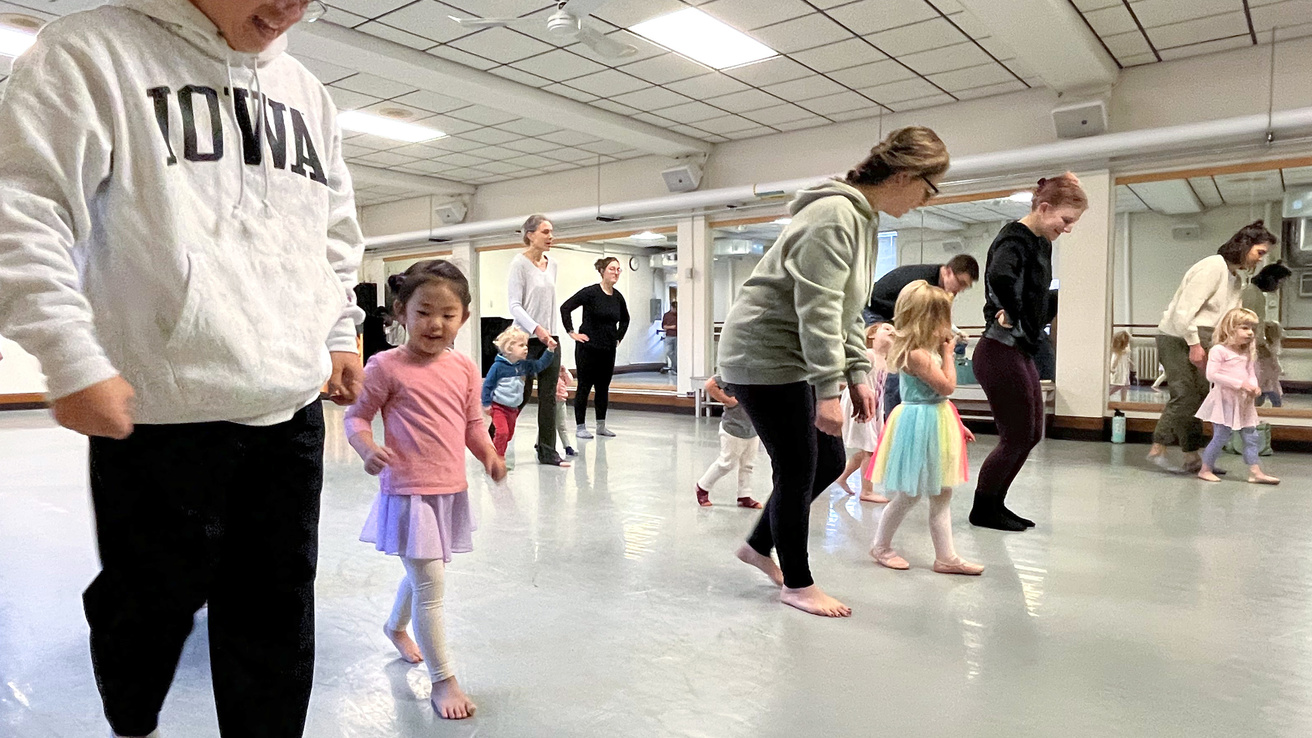
At the heart of the University of Iowa Youth Ballet program, you will find Wee Dance and Creative Movement—foundational classes that provide children with the movement skills they need before diving into traditional ballet classes. The activities in these classes, while not immediately recognizable as traditional ballet technique, play a pivotal role in building a love for movement and preparing students for the rigors of classical ballet.
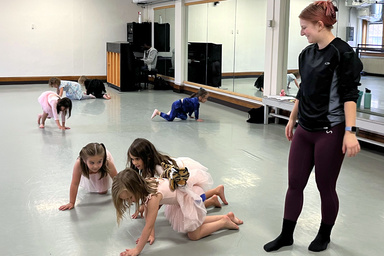
In Wee Dance and Creative Movement classes, instructors guide students to develop and refine foundational motor, musical, and cognitive skills. Visualization through storytelling enhances the dancers’ attention and allows them to understand the details of what they are being asked to do.
Pretend Play
Pretend play helps students understand and interpret the world around them as they navigate new experiences. In this way, young dancers are introduced to new concepts using familiar ideas.
In one activity in Creative Movement, students are instructed to “pour” a glass of water and balance it on different body parts while dancing throughout the studio. Students discover that these body parts can be used to initiate movement, and they explore and maintain an elongated posture for balance.
Purposeful Play
A notable exercise, "Growl Like a Tiger," asks young dancers to crawl skillfully while balancing a stuffed animal at the base of their spine. This challenges students’ core stability, develops cross-body connections, and stimulates new neural pathways.
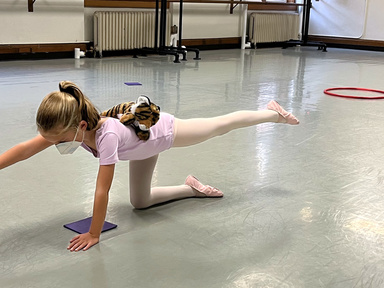
Similarly, in another activity, teachers cue students into bunny rabbit play, which trains the essential skill of jumping from two feet to two feet—a necessary component of petit allegro in classical ballet.
Progressive Play
In a third activity, instructors draw upon students existing familiarity with flamingos (clarified and reinforced with illustrations and a flamingo stuffed animal) to guide them into single-leg balances. As the students progress through the years in these classes, the amount of time the dancers sustain their flamingo passé increases. Eventually, they are tasked with picking up a dropped beanbag while holding their one-legged balance.
Through our work in children's dance classes, our instructors nurture children in support of their development, not only as dancers, but as whole people.
“In dance class, dancers should be engaged in active learning that includes support from the teacher and playful exploration. Teaching dance to the whole child will result in long-term success in all areas of their life,” (Perfect Form Physiotherapy and The Ballet Blog, 2016).
Upcoming Events
Please visit our updated Upcoming Events page for more details and downloads.
